F.A.Q
Proactive Contamination Management
How often should treatment be performed?
Recommended treatment schedule is every thirty (30) days. Various forms of bacteria are introduced into your facility on a daily basis. By eliminating surface bio-film and airborne pathogens each month, we create a clean baseline and introduce an inhibiting factor – reducing the risk of an event as a result of cross contamination.
How quickly may a treated space be reoccupied?
Typically after one (1) hour.
Are there any spaces that should not be treated?
No, except for rooms with an open flame. If there are rooms that you do not want to allow access, simply lock and we will exclude. If a room in your facility is open, we will treat.
Does treatment of my facility mean I won’t get sick?
No. It does mean that you have proactively taken the sanitation measures of your facility to a higher level, reducing the risk posed by illness causing agents.
Do marketing materials suggest a problem in our facility?
No, just the opposite. The marketing materials we provide allow our customers to convey a very positive message to those who use their facility. Our materials clearly define the treatment process, specifically what’s being treated and the reasons for choosing to proactively treat. All of this provides a sense of comfort to your clients. Knowing that you have chosen to proactively address an issue that everyone is aware of, namely bacteria in an indoor environment, creates good will and a positive word of mouth message.
Can homes be treated?
Yes. We treat several homes on a monthly basis.
Should animals be removed?
Yes. A BioGreen USA treatment is non-toxic, however we are still introducing a solution into the air and it may irritate some animals.
What about the HVAC system?
BioGreen USA does not specifically treat HVAC systems. As part of a fogging treatment, it is normal for some of the fog to find its way into the HVAC systems, but we do not make claims specific to the disinfecting of the HVAC system.
How does a solution get to be a disinfectant?
“Disinfectant” is actually a legal term that can only be stated on product labels that have been proven to kill 99.999% of specific bacteria. “Fungicide” is also a legal term that proves the product kills 99.999% of fungi. These test bacteria and fungi are predetermined by the Environmental Protection Agency (EPA). In addition to germ kill data, scientists review the product for other characteristics such as; how toxic the product is to our environment, directions for safe and effective application, storage, disposal and handling, plus a complete review of the health and safety profile of the product. When the EPA is satisfied with all the scientific data, the product is registered by the EPA and issued an EPA Registration Number. The product can now be called a disinfectant or a fungicide.
What are the advantages of using fogging as a means of treatment?
The quickest way to disinfect a hospital room, entire basement, school gym or any facility is by using a fogger that can create a fine “dry” mist to treat air, objects, walls, floors, and ceilings in a matter of just a few minutes. Foggers can dramatically cut the time to disinfect large areas. However, only a few disinfectants can be dispersed in this manner because of their non-corrosive properties to treated surfaces and objects.
Should the surfaces be cleaned before application?
Ideally, yes. Since a disinfectant doesn’t know the difference between greasy soil and bacteria, it is best to pre-clean heavy soil first. This way there is more active disinfectant to attack germs instead of attacking dirt.
Will fogging reach all surfaces in the building?
Only exposed surfaces of the building and its contents will be treated by the fog. While some fog may filter through cracks or openings, items or building components which are not exposed to the fogging process would not be expected to receive the same level of treatment as those that are exposed.
What residue remains on surfaces after the fogging process?
A BioGreen USA fogging treatment leaves a microscopic film on the treated surfaces. In virtually all cases, except occasionally on glass, mirrors and highly polished surfaces or finishes, it is unnoticeable to the eye. No rinse or additional cleaning is required.
